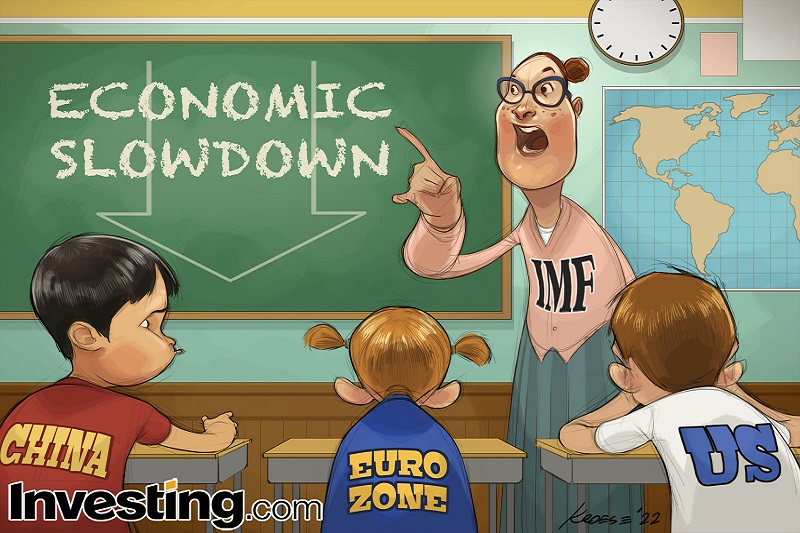Investing.com - In autumn, absolutely noone expected the financial markets to experience their fastest year-end rally in decades. The S&P 500 had fallen to its 5-month low and the voices of those talking about the long-awaited correction to 3500 points were getting louder and louder.
Goldman Sachs (NYSE:GS) predicts further golden times for 2024, because there is no sign that things will turn out differently, but it is precisely this complacency that could backfire on investors.
The price fireworks were based not least on the completely unexpected change of course by Fed, and the biggest danger for the coming year is that it will be wrong in its assessment of inflation, as it was in 2020 and 2021. Financing conditions are already looser than they were in May 2022 and, once again, no one has realised that inflation could return with a vengeance.
The turn of the year will therefore pose a particular challenge for Fed Chairman Powell. The market's interest rate forecasts are moving further and further away from those of the central bank. The distance between the interest rate hikes expected for 2024 has risen from two in November (FOMC 2, market 4) to three (FOMC 3, market 6).
Should the Inflation now rise again and the Fed has to row back, it would have finally lost its last shred of credibility and the "Mag7 bubble would be pulverised within nanoseconds".
BofA analyst Benjamin Bowler argues that volatility follows short-term interest rates with a lag of two years. In view of this, volatility is expected to rise in 2024 and not peak until 2026. The recession that is believed to be a pipe dream is far from off the table. Bowler writes:
"The bond market has repeatedly tried to predict a recession for the US, but the Fed and economic data have repeatedly forced it to retract those predictions. There is a risk that a recession will occur when investors no longer believe in it. Almost 100 years of data point to downside risks for equities in this case, as recessions have always been painful for equities in the past and have almost never been priced in in advance."
This would hit the Mag7s the hardest, as they are also historically the most susceptible to shifts in market sentiment, as Bowler explains:
"History shows that the initial euphoric reaction is often misguided and leads to bubbles that eventually dissipate, first bursting and then winners rising from the ashes. The Nifty 50 bubble in the 1970s taught us what it means to believe that valuations don't matter. Talk of the Magnificent 7 being the "new Gold" appears to be succumbing to that very belief and there is a risk of history repeating itself."
There is also a lot going on on the commodities front. The Middle East remains a powder keg and everyone is wondering how it can be that the Iranian-backed Houthi rebels are terrorising shipping passages in the Red Sea and none of the neighbours are intervening.
Geopolitics analyst Tom Luongo assumes that the Houthi attacks are now also in the interests of the Kremlin, Beijing and Saudi Arabia. After all, if only half of the ships that normally cross the Red Sea take the route via South Africa, the additional fuel consumed will increase the demand for crude oil by around 500,000 barrels per day.
This not only helps the Saudis, who need an oil price of 80 dollars for their budget, but also keeps inflationary pressure high in the USA, weakens European competitiveness and forces the EZB to defend the euro so that energy costs do not explode.
In this context, Luongo points out that the Houthis are not attacking ships indiscriminately. They are invariably ships of geopolitical opponents, while Chinese freighters and Russia's oil tankers pass unchallenged.
Translated from German using DeepL.
InvestingPro+ with a 50 % discount is not a good offer? We'll go one better! With the discount code UKNEWYEAR2 you get a further 10 % off the InvestingPro+ 2-year subscription (up to 60 % in total). Click here and don't forget the discount code
